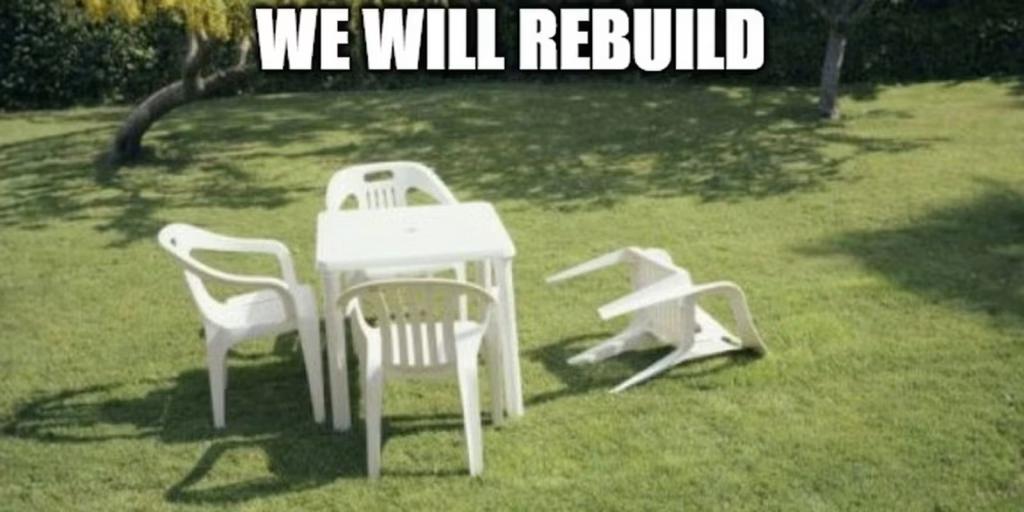Abigail Perkiss’s Hurricane Sandy: On New Jersey’s Forgotten Shore provides a vivid recount of New Jersey’s people and community in the wake of Hurricane Sandy. Reflecting on my own upbringing in Florida (close enough to the coast to remember worry about the dangers of hurricanes but not close enough to live in fear of storm surges literally washing away our home), I felt particularly moved by the way Perkiss relates a broad array of oral history interviews. In summarizing popular opinion in the Bayshore after the (small) wake of Hurricane Irene, Perkiss states, “[they] were frustrated and felt like the government cried wolf, creating unnecessary frenzy and needless stress” (p. 10). This is a feeling with which I am all too familiar, hurricanes being ever-present during my upbringing and yet rarely impactful in and of themselves. Rather, grocery stores and gas stations run empty, scarcely a pack of bottled water may be found without driving an hour inland, and the spaghetti lines on the TV screen constantly shift until the storm makes landfall, the lights flicker, and I venture outside the next morning to a beautiful, sunny day.

Hurricane Ivan marked a departure for my family from the “frenzy” providing greater challenge than the storm itself. Ivan was one of nine named storms during the 2004 hurricane season, six of which were hurricanes. While my childhood home was spared from the destruction impacting so many families, I distinctly recall the night the storm made landfall—we “slept” in our home’s most central hallway. We watched the power flicker out and come back again three times before it shut off for good, and we listened to what sounded like several freight trains simultaneously passing right outside our home. Oddly enough, that night, September 2nd, 2004, was the first time my little brother, born not three months earlier in June, slept all the way through the night. When the sun rose the next morning (a beautiful, sunny day), trees blocked off vehicle access to our street. A large oak tree in the back yard of our suburban home had been split cleanly in two, one half of it still standing. The power turned back on a week later.
Perhaps the most poignant aspect of recovery from “natural” disasters, as Perkiss brings to life in her book, is the months- or years-long battle to reclaim and rebuild. Perkiss deftly conveys the agonizing process through which individuals and communities had to navigate, often to no happy ending, in their attempts to rebuild their lives. “In turn, [Cavillo’s] adjuster said, ‘that’s called erosion, and we don’t pay for erosion” (p. 52). In similar ways to New Jersey’s coastal communities post-Sandy, blue tarps were scattered over roofs in my hometown for years following hurricane Ivan—nobody wanted to pay up. Indeed, Hurricane Sandy contributes significantly to the preservation of memory surrounding that storm’s impact and, in many ways, is representative of far more than simply one place’s response to a natural disaster.
One may wonder, however, how broad the scope of an oral history project must be to encapsulate the thoughts, feelings, and memory in general of place and time so impactful as a community’s response to a natural disaster of the proportion brought on by hurricane Sandy. How does the oral historian manage the relationship between the story that, in the historian’s mind, is waiting to be co-authored, and the availability of the archive itself? Perkiss comments in Appendix B, “resources were limited, and the timeline was tight” (p. 91). Certainly, Perkiss’s assembly and management of an undergraduate team to assist her in the co-authoring of these stories represents an elegant solution to the challenge of limited resources and tight timelines. However, are there facets of the story that Perkiss believes were not able to be captured due to the limitations of the project? The origin of the project itself—a phone call—is also not always the norm. How may the oral historian identify areas in need of research in the moment, before the opportunity passes by? Finally, the oral history interviews took place between 2013 and 2015. Is there a method through which the oral historian can identify a temporal “sweet spot” (if indeed such a thing exists)? What are the means through which the historian may ascertain that enough time has passed to allow potential interviewees to recover from traumatic experiences before being interviewed?